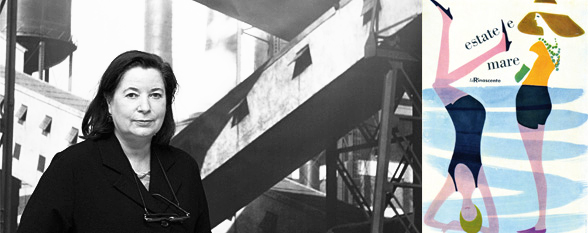Gerda Breuer
Female Graphic Designers in History of Design and in Design History
Design history is constructed by a set of multi-layered compositions. Permanently added to and modified, the modifications nonetheless do not have a significant effect on the actual narration: there is still a canon of design history. One element of this narration is that female designers are only marginally represented in the field of graphic design, especially in modernism.
Since the beginning of the modern era and parallel to the emergence of the women’s movement, women have worked in various fields of graphic design. Although they did not initially gain access to institutionalised forms of training and education, which meant that they were unable to enrol in full courses of study at art academies and were likewise excluded from vocational programmes, women nevertheless succeeded in professionalising their training through special courses at academies and private schools as well as through private instruction.
However, women were marginalised by avant-garde Modernism, which serves as a primary reference for design history. Modernist groups in Europe were male associations. Those women who nonetheless worked successfully in these circles and schools were exceptions. Even today, the structural inertia of gender segregation is reflected in official design associations. The bipolar rhetoric of Modernism confirmed the gender binary in the realm of design and subjected it to a rigid evaluation, thereby reinforcing the dichotomies between the sexes. Stylistic movements that were not accepted by protagonists of Modernism, such as historicist manifestations of applied art and Art Deco, were feminised and dismissed as irrelevant. Only under exceptional conditions were women able to gain greater influence in avant-garde circles.
By contrast, female graphic designers were strongly represented and much more visible both in the applied arts at the turn of the century and in the booming market of illustrated magazines, journals, advertising and popular culture during the 1920s. During their lives, they were held in high esteem by their clients and the trade press, yet few of them entered the canon of design history.
Gerda Breuer is a historian of design and art. In 1980 she was awarded a PhD in Art History on American Romantic from the RWTH Aachen (Germany). Between 1985 and 1995 she worked at the following museums, with the titles of: Assistant Director of the Museum of Industry, Rhineland; Director of the Museum of Industry Cromford, Ratingen; Assistant Director of the Institute Mathildenhöhe in Darmstadt, Germany. From 1995 to 2013 she was professor of art history and design history at the Berg. Universität of Wuppertal. From 2005 to 2012 she was chairperson of the academic advisory council of the foundation of the Bauhaus Dessau. Since March 2014 she holds a research fellowship at the Foundation Bauhaus Dessau, Germany. She has published on art and design history of the 19th and 20th century; in 2012 she co-edited, with Julia Meer, the book Women in Graphic Design 1890-2012 (Jovis).
website www.gerdabreuer.de




